
Customer support is essential to the success of any business. In the past, customer support was often transactional, meaning customers would contact the business when they had an issue and the business would respond with a solution. However, with the rise of messaging apps, customer support has shifted to a more conversational approach. In this article, we'll discuss what conversational customer support is, as well as its benefits, challenges and how to implement a conversational customer service approach with respond.io.
What is Conversational Customer Service?
Traditionally, companies had a transactional approach to support, with a focus on addressing specific customer issues or problems. As the name suggests, this approach is more transactional in nature, meaning that the goal was resolving the customer's issue as quickly and efficiently as possible.
Transactional customer service often involves assigning a customer a ticket or number and providing specific information, troubleshooting steps or a resolution to the customer's problem. The communication style used by transactional support agents is formal and professional.
Conversational customer service refers to using live chat agents and technology such as conversational support software to create an experience that mimics human-to-human conversations rather than a series of disjointed interactions.
It involves engaging in natural language conversations with customers to understand their needs, answer their questions and solve their problems.
Because of their conversational nature, companies provide conversational customer service mostly over instant messaging channels. It makes sense for conversational support teams to embrace the omnichannel support approach if they have a presence on multiple channels.
This way, customers who interact with them get a consistent experience on every channel. Let’s see what benefits a business should expect from conversational customer service.
Conversational Customer Support Benefits
First and foremost, conversational support allows for a more personalized customer experience. By using conversation automation, businesses can respond to inquiries in a way that feels tailored to the customer's specific needs.
This approach can help build stronger relationships with customers, which is crucial for establishing customer loyalty and retention.
Another benefit of conversational support is that it allows for faster response times. Thanks to automation, customers can receive quick answers to their questions. And when agents are unavailable, away messages can be used to manage response time expectations.
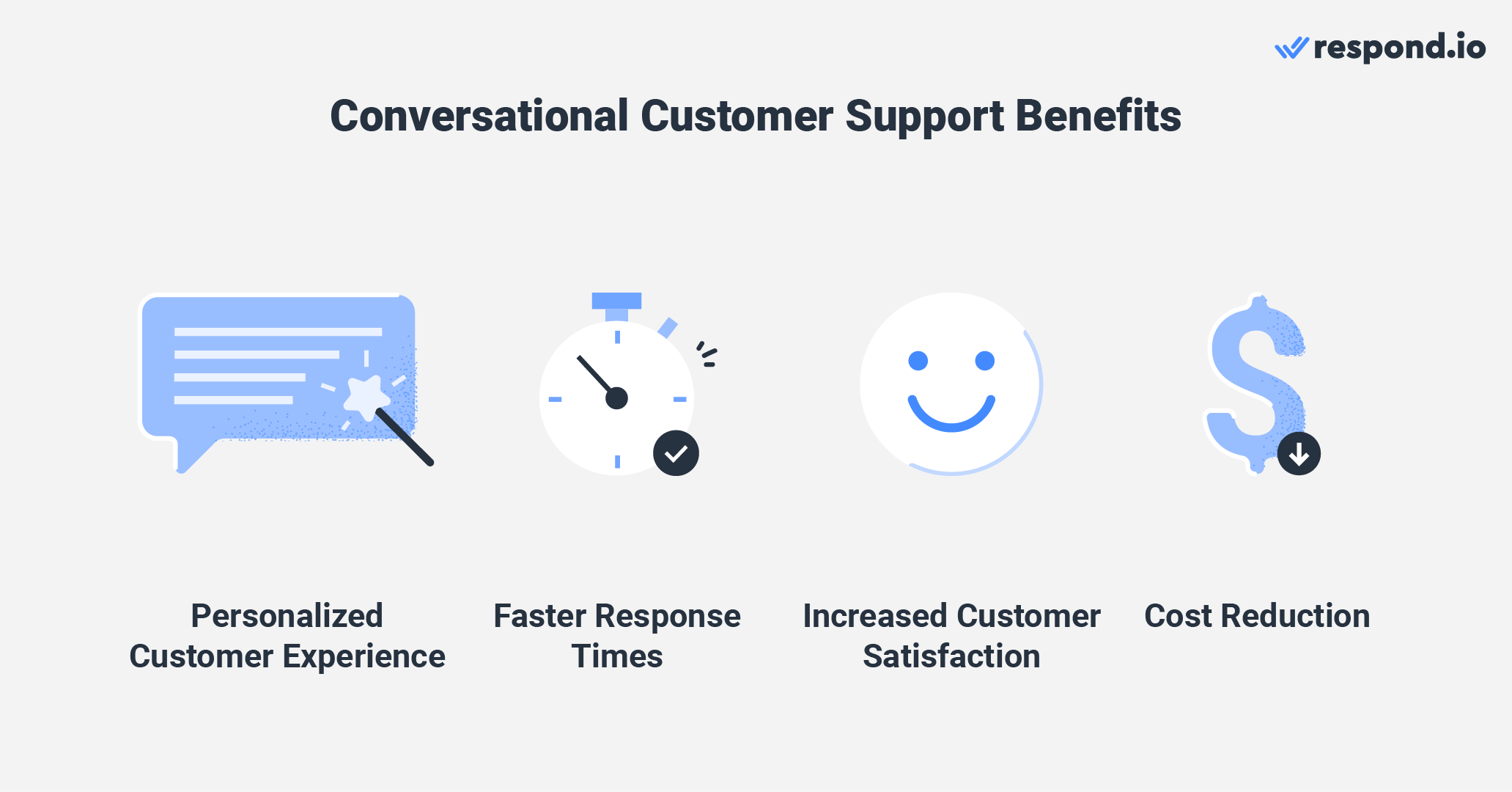
This helps improve customer satisfaction, which is essential for maintaining positive relationships with customers.
In addition, conversational support can also help reduce costs for companies. By automating certain aspects of customer service, companies can reduce reliance on human customer service representatives, or use manpower on higher-value tasks.
Overall, conversational support offers a range of benefits for both companies and customers alike. With a more personalized experience, faster response times and cost savings.
Next, we’ll guide you through E4CC’s story and how it used respond.io to improve its conversational support approach.
How E4CC Successfully Implemented Conversational Support
E4CC, an English language training provider for Latin Americans seeking jobs in call centers, enhanced its conversational customer service approach using respond.io. In the past, agents were in charge of guiding contacts through the sales funnel.
On respond.io, E4CC agents used Workflows automation to streamline its chat routing process. Agents can also classify contacts using Tags and reduce manual intervention in the sales and support process with automated messages and chat routing.
This enabled customers to choose a sales or support function and be instantly connected to a suitable agent. These improvements helped E4CC achieve 3x faster chat routing.
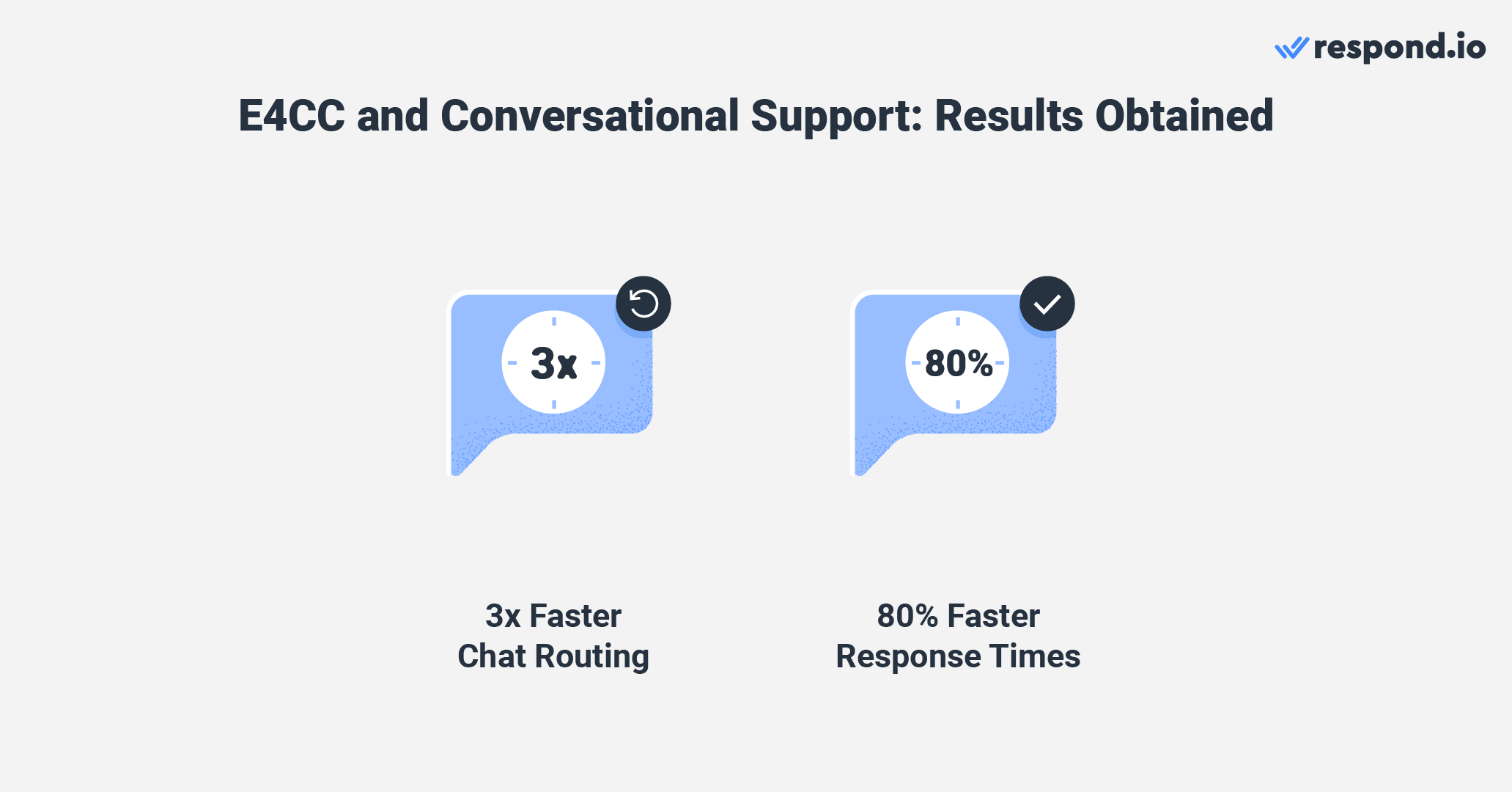
The company also noticed an immediate improvement in operation efficiency, contact management and communication speed and quality. The implementation of routing logic decreased first response times by 80%.
At first, omnichannel support may seem daunting. In fact, there are some common hurdles that businesses may experience when changing their support approach from transactional to conversational.
Turn customer conversations into business growth with respond.io. ✨
Manage calls, chats and emails in one place!
Conversational Customer Service: Common Challenges
Conversational customer support comes with its own set of challenges such as managing multiple messaging channels to answer inquiries. With customers reaching out through different channels such as WhatsApp, calls or SMS, it can be difficult to manage all these platforms simultaneously.
Many channels not supporting multiuser access, leading to inefficient communication among the support team and delayed response times. Generally, businesses need a scalable solution that allows the incorporation of as many agents as needed without restrictions.
Additionally, most messaging channels enforce messaging windows. While these protect customers from spam, they put restrictions on when support agents can message customers. Failure to respond on time could potentially lead to disjointed conversations and dissatisfied customers.
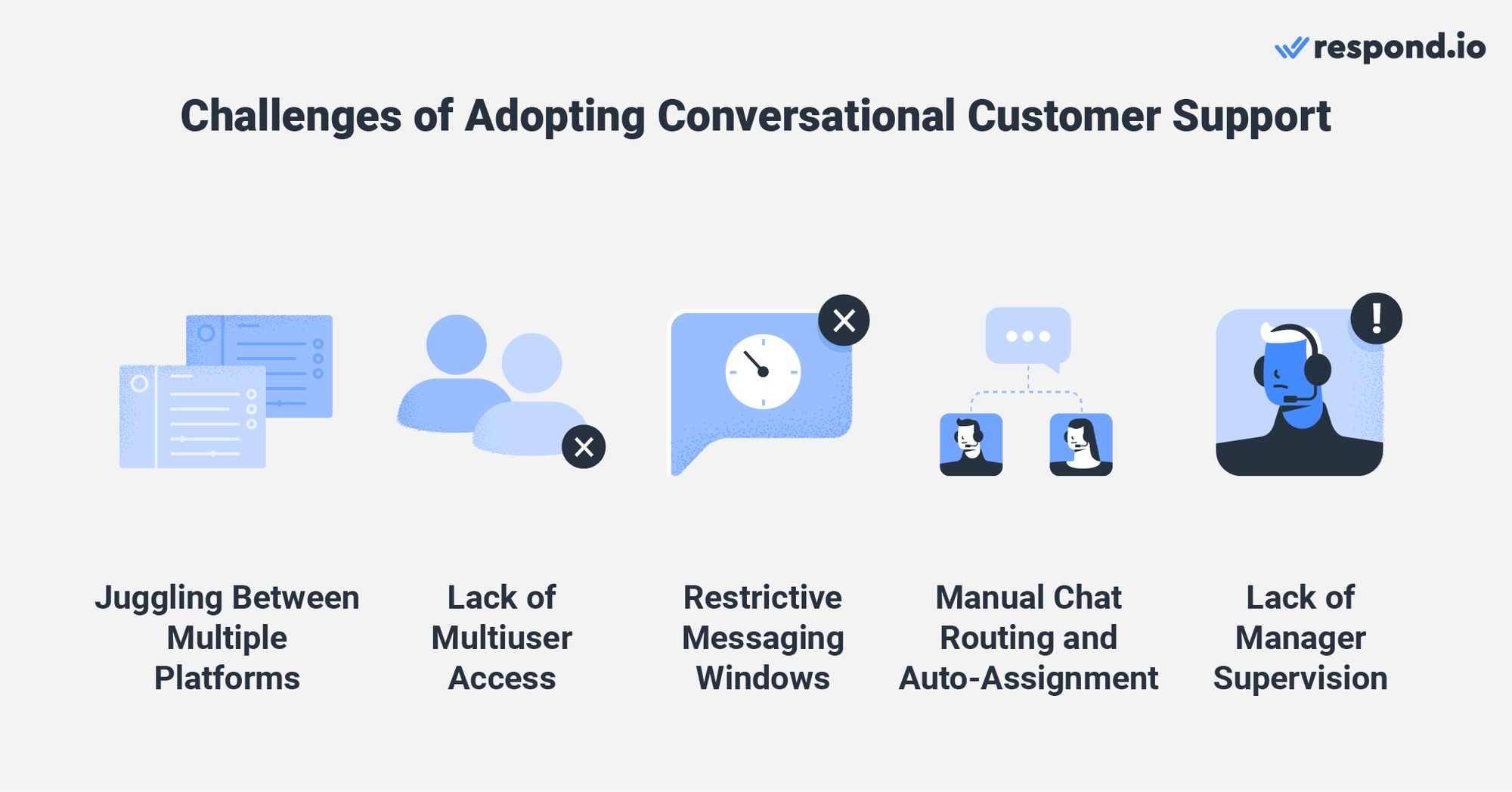
Another common challenge is manually determining the nature of inquiries and passing them on to the relevant teams. This can be time-consuming and can lead to errors in assigning inquiries to the appropriate team, causing delays in resolution.
Finally, monitoring the quality of conversations and agent performance can be a challenge. Without the proper solution, it is difficult to ensure agents are providing consistent, high-quality support to customers.
This makes identifying areas for improvement a complicated task. Using the right solution will attenuate or even eliminate the aforementioned issues. In the next section, we’ll explain how respond.io can help.
Conversational Support: How to Successfully Implement it with Respond.io
Respond.io is a customer conversation management software designed with conversational customer interactions in mind. Here’s how respond.io makes conversational support easy for your customer team.
Conversational Support: Enable Multiuser Acces to an Omnichannel Dashboard
As an omnichannel inbox, respond.io allows team members to collaborate on customer support across multiple channels from one place. Regardless of the messaging channel customers use, businesses can provide them with a seamless support experience.
Respond.io's Contact Merge feature helps you consolidate multiple customer profiles across different messaging channels into a single profile.
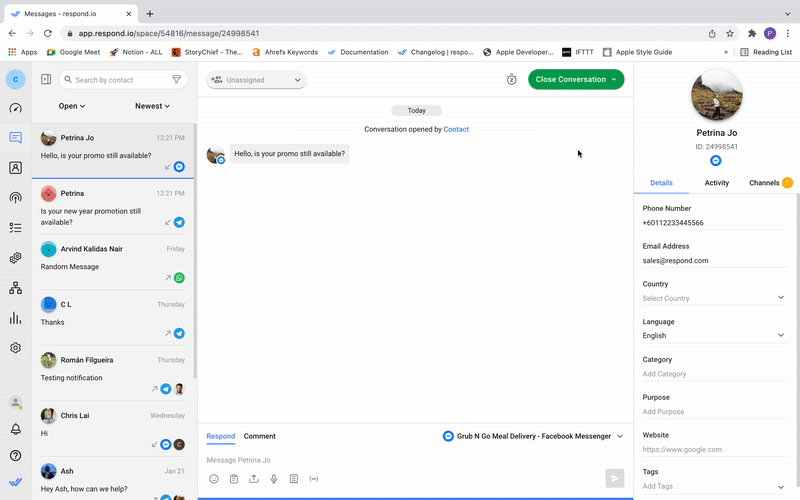
This enables you to recognize returning customers on any channel and ensures that all customer information is up-to-date and accurate, reducing Contact clutter and giving agents a holistic view of their customers.
Conversational Support: Extend or Reopen Messaging Windows Whenever Required
As mentioned, messaging windows are one of the main handicaps when providing conversational customer service. Without a proper solution, support agents must rely on customers to re-open the messaging window with a new message, which is less than ideal.
Respond.io offers businesses a few methods to resume conversations with customers on different messaging channels. For example, you can use respond.io to create, validate and save WhatsApp API message templates and initiate customer conversations.
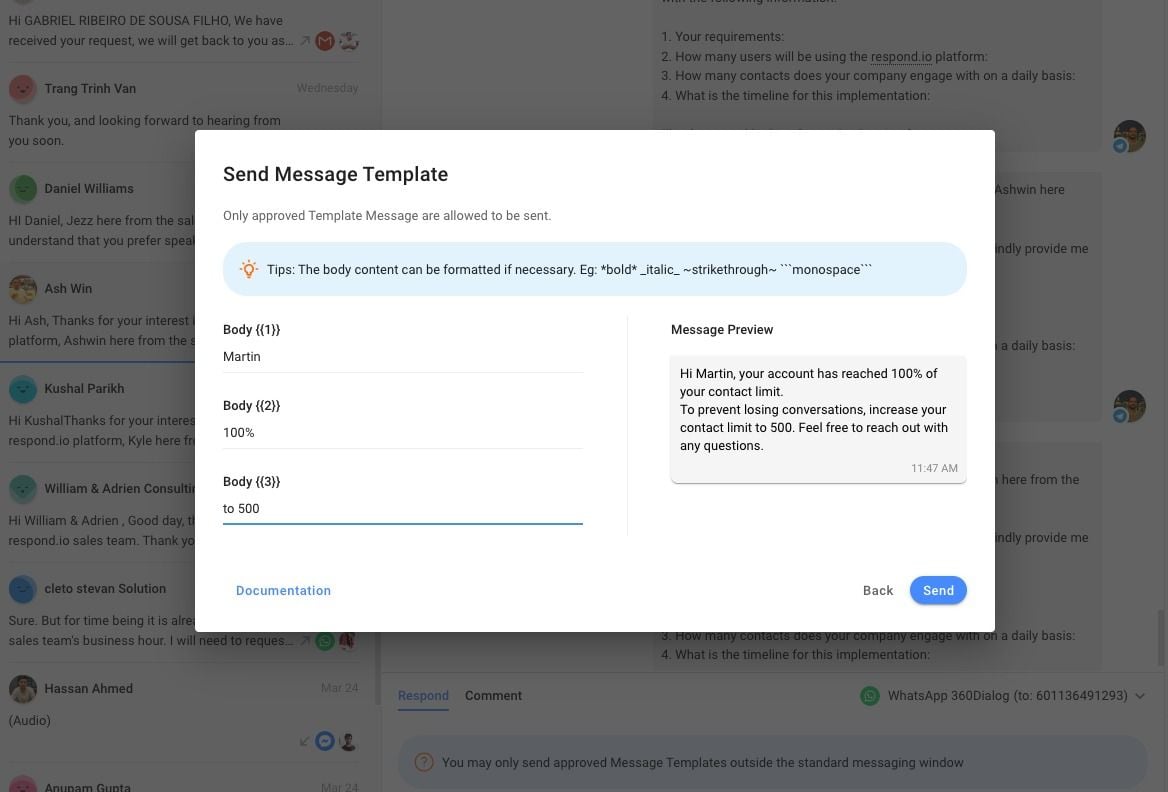
If you are concerned about Facebook Messenger’s messaging window, there is a solution too. Respond.io supports Message Tags, which allow support agents to circumvent the window for a number of use cases.
Most importantly, respond.io is one of the selected platforms supporting the Human Agent Tag, which extends Facebook Messenger’s messaging window from 24 hours to 7 days.
Conversational Support: Integrate Customer Service CRMs and Automate Support Processes
Certain support tasks are time-consuming and add unnecessary workload on customer-facing teams. When automated, these processes become more efficient and consistent, allowing agents to focus on other important tasks.
Respond.io's chat routing and auto-assignment Workflows help businesses manage large volumes of incoming messages with little to no human input.
Businesses may ask multiple-choice questions to route conversations based on their purpose. Alternatively, use Tags to classify and route existing customers, such as VIP or corporate clients, to dedicated teams.
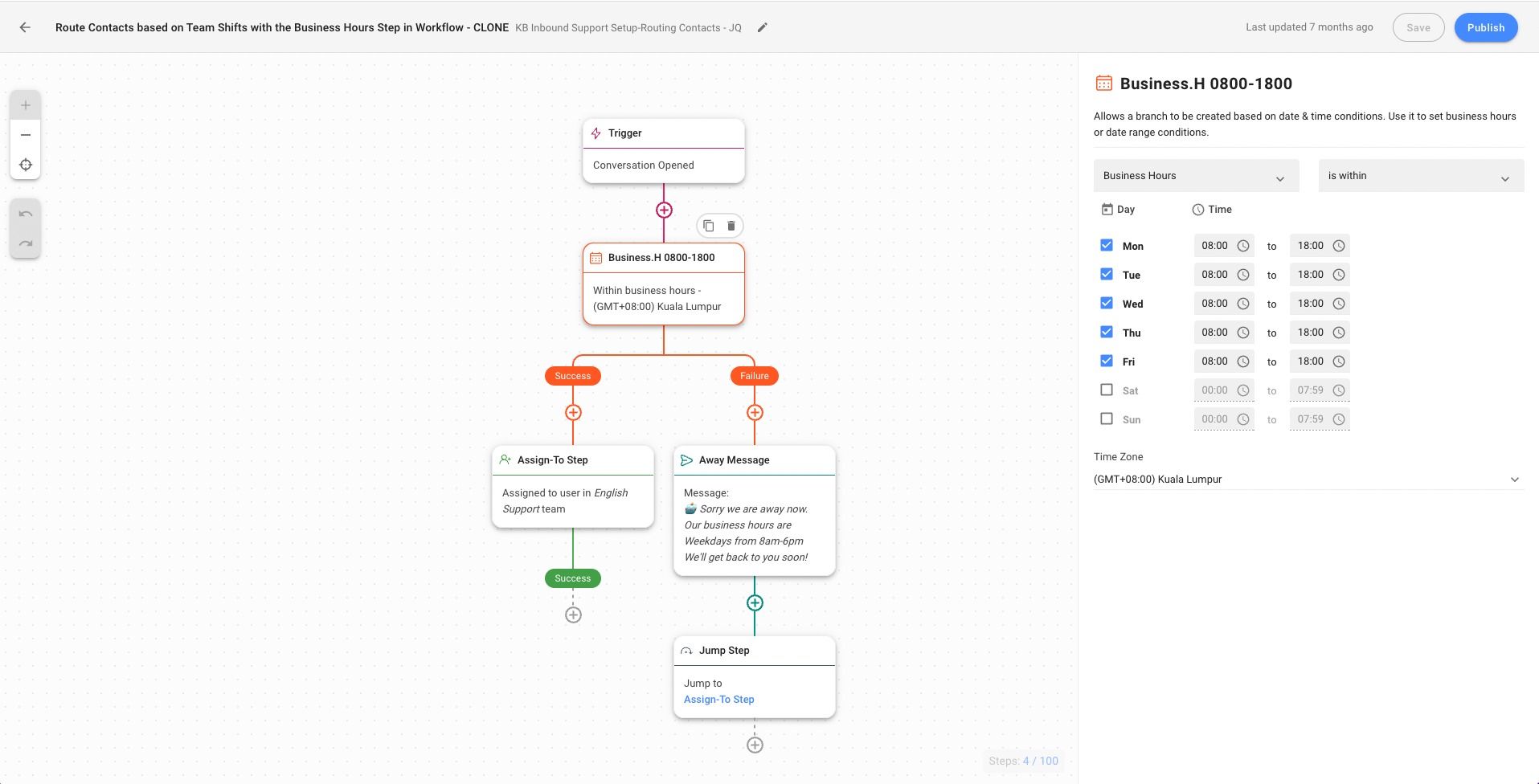
Once conversations are routed to the right support team, they can be assigned to an available agent or a specific agent, depending on your assignment logic.
In addition, respond.io integrates with your support CRM. This can streamline your support workflows. By enabling you to automate tasks such as ticket creation, assignment, and follow-ups, saving your team time and reducing the risk of errors.
Conversational Support: Monitor Live Conversations to Find Trends and Spot Issues
To ensure the success of your conversational customer support strategy, it’s important for managers to supervise all support conversations in a central omnichannel dashboard.
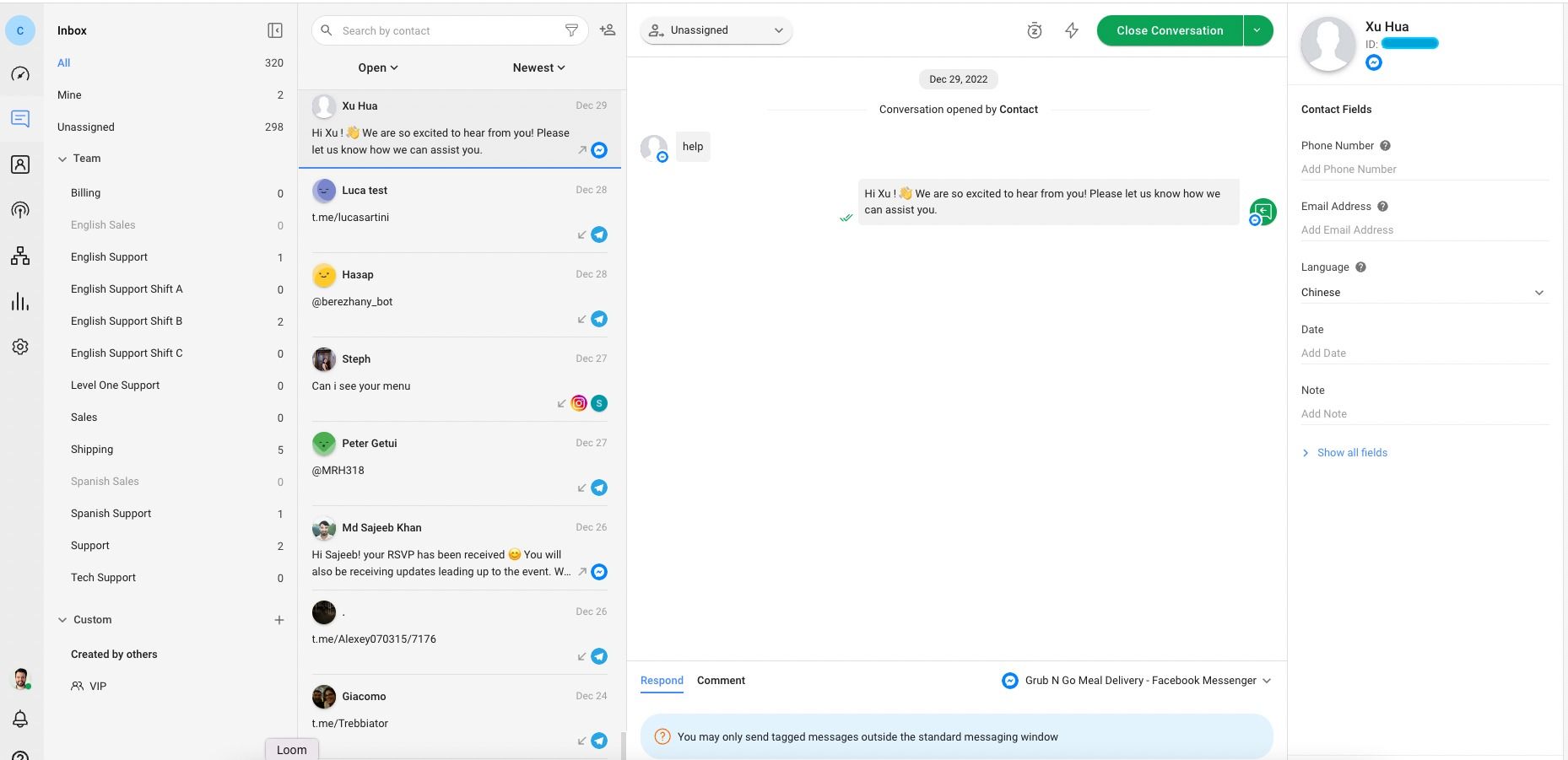
Respond.io allows you to monitor live conversations in real time, providing valuable insights into customer interactions. From the respond.io Dashboard, managers can identify trends, track customer sentiment and make informed decisions about support strategy.
Conversational Support: Gauge Support Effectiveness with CSAT Surveys
Because conversational support agents strive for long-lasting relationships with customers, it is critical to assess the degree of satisfaction customers experience when chatting with agents.
CSAT surveys are one of the most popular methods of gauging customer satisfaction and can be set up with respond.io Workflows.
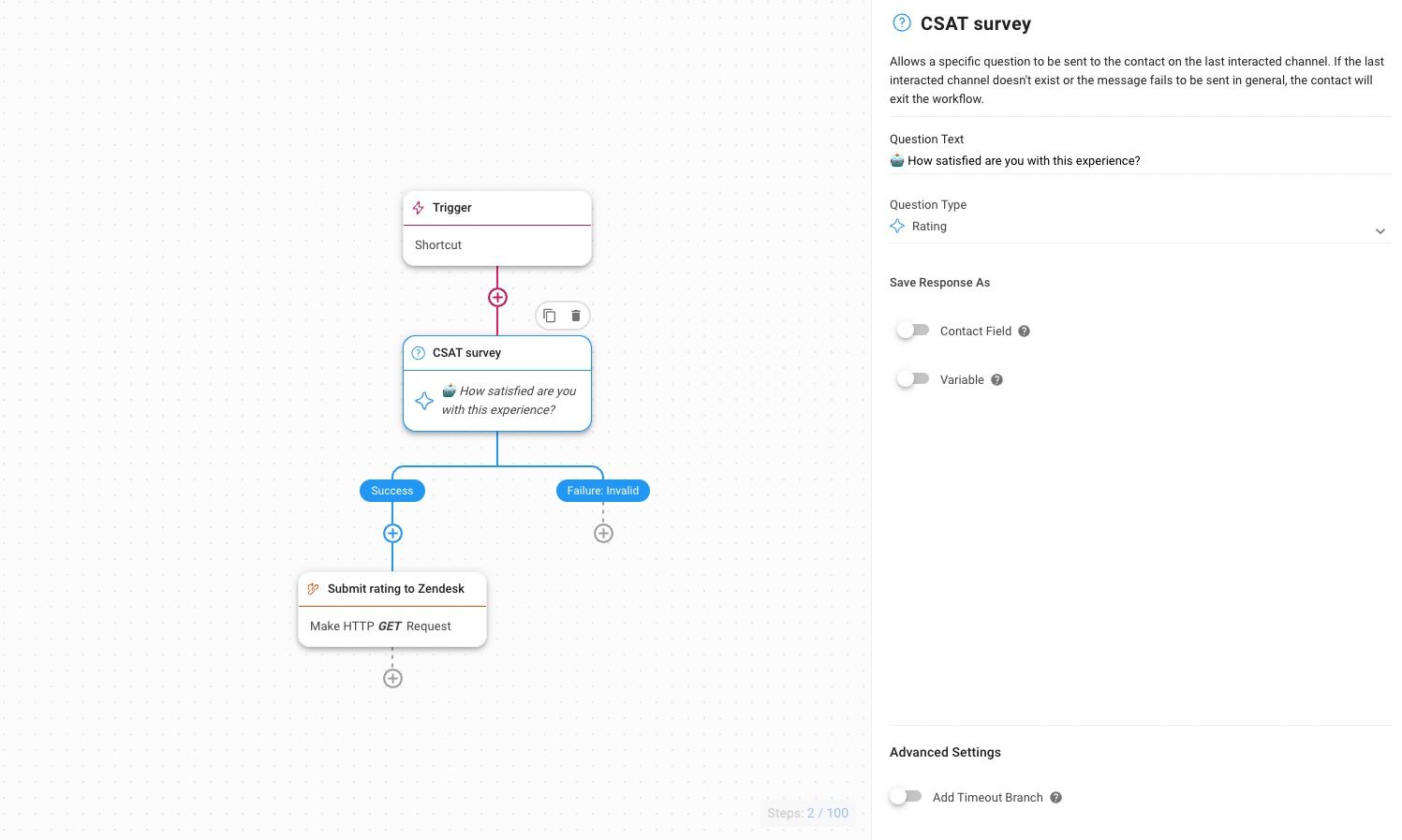
Some businesses choose to automatically send CSAT surveys every time a conversation is closed to acquire more data. However, to avoid disturbing recurring or long-time customers, businesses can also choose to trigger them manually.
To sum up, companies nowadays are realizing the benefits conversational customer service has to offer as opposed to transactional support.
Although implementing a conversational support strategy comes with its own set of challenges, these are negligible with the help of a customer conversation management software like respond.io.
Do you want to get your customer team started on conversational support? Try respond.io for free today!
Turn customer conversations into business growth with respond.io. ✨
Manage calls, chats and emails in one place!
Further Reading
If you’ve found this article interesting, here are some additional reads you may like:






































 Electronics
Electronics Fashion & Apparel
Fashion & Apparel Furniture
Furniture Jewelry and Watches
Jewelry and Watches
 Afterschool Activities
Afterschool Activities Sport & Fitness
Sport & Fitness
 Beauty Center
Beauty Center Dental Clinic
Dental Clinic Medical Clinic
Medical Clinic
 Home Cleaning & Maid Services
Home Cleaning & Maid Services Photography & Videography
Photography & Videography
 Car Dealership
Car Dealership
 Travel Agency & Tour Operator
Travel Agency & Tour Operator




